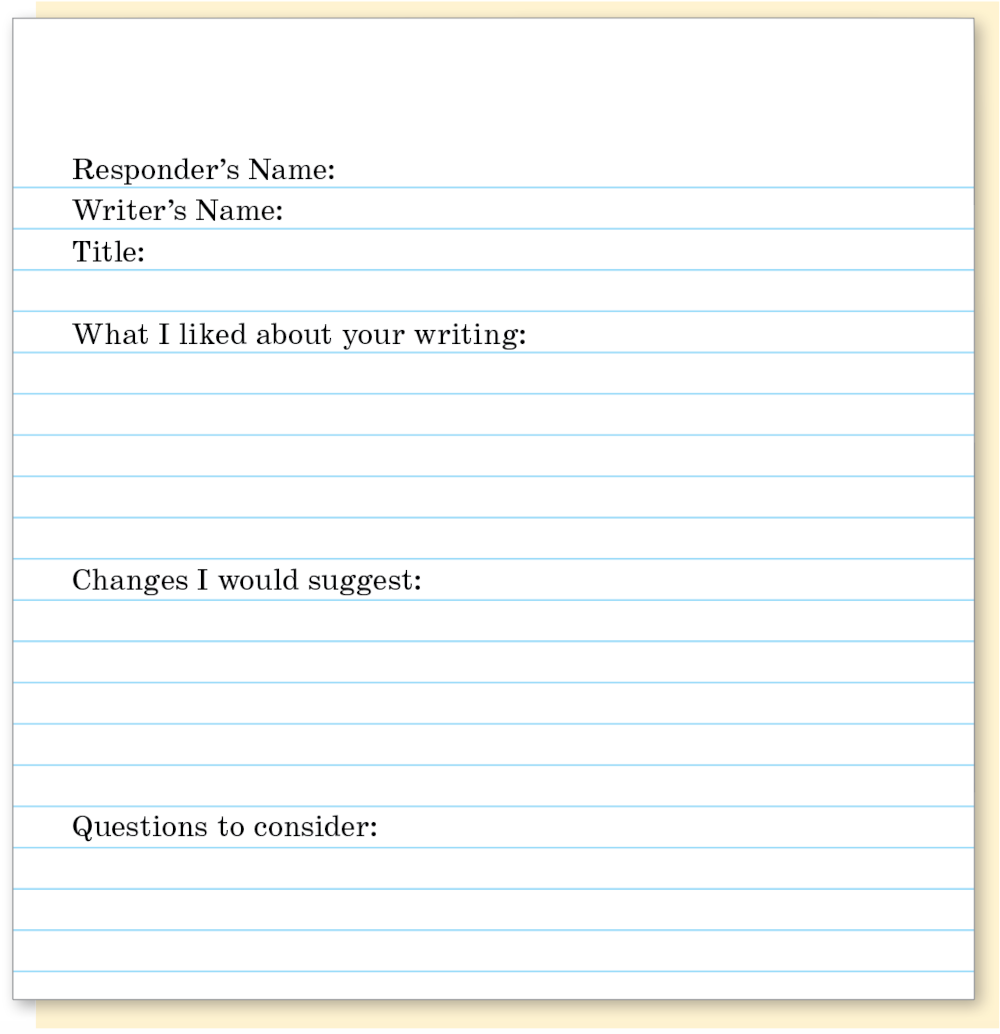WOC 047
Page 47
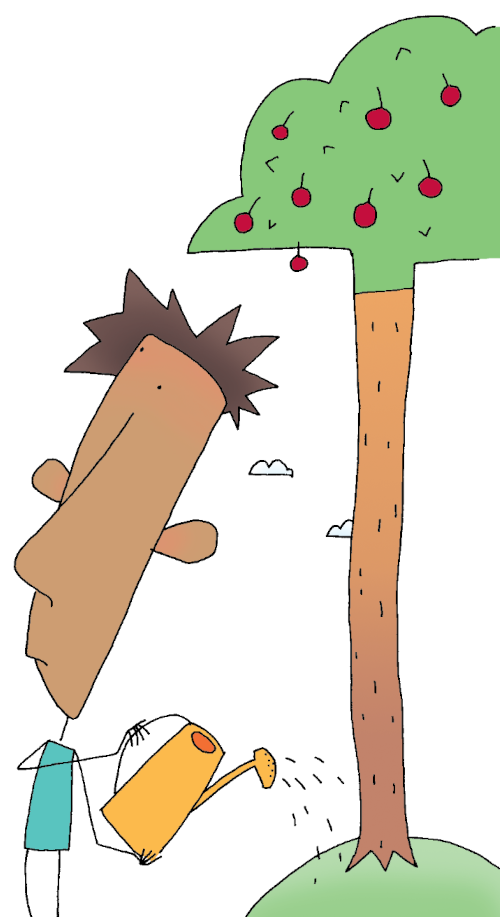
Revising and Responding
Writing a first draft is like planting a garden. It’s hard work, but it can go quickly, getting all those seeds in the earth and watering them. Revising is like tending your garden—training branches, weeding the soil, digging trenches for drainage, adding fences to ward off voracious bunnies. . . . Revising involves reorganizing, cutting, adding, and redoing as you help your writing grow.
Even experienced authors spend a lot of time revising. Author Kelly Barnhill notes, “That’s the magic of revisions—every cut is necessary, and every cut hurts, but something new always grows.” This chapter equips you with trait-tools for revising and helps you get a partner to lend a hand.
What’s Ahead
WOC 048
Page 48
Quick Guide ■ Revising
When you revise, you add, cut, rewrite, and reorder information to turn a first draft into a clearer, more effective piece of writing. You’re ready to revise once you . . .
- complete your first draft,
- set it aside for awhile, and
- return with fresh eyes.
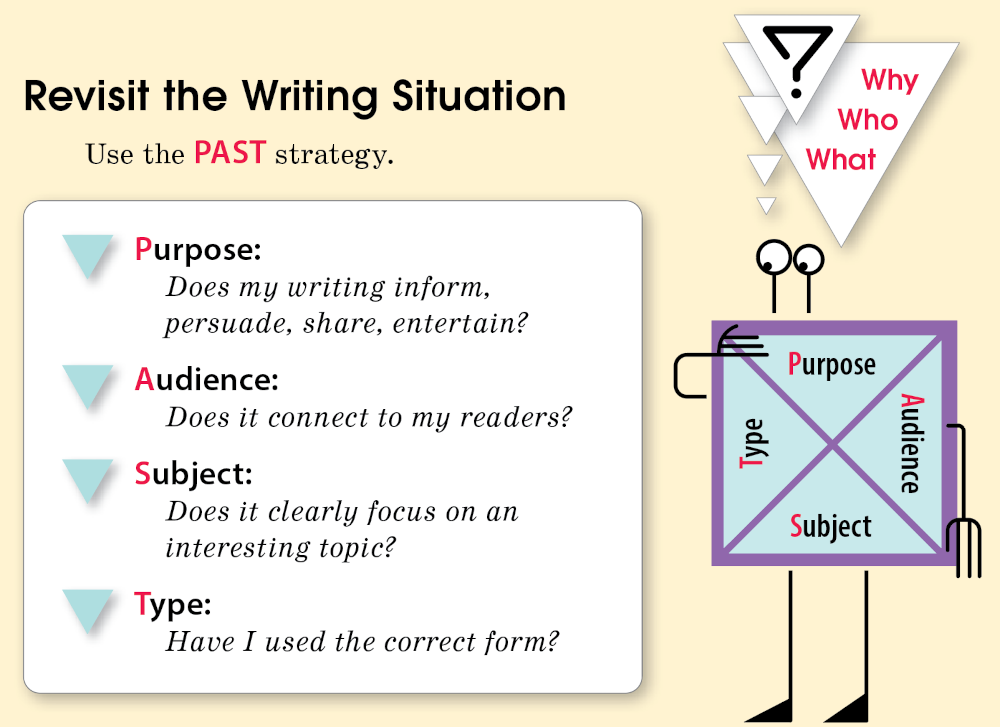
Link to the Traits
Review the first three traits. Then add words and sentences.
Ideas ■
Check your focus (thesis) statement and support.
Organization ■
Check your beginning, middle, and ending.
Voice ■
Make sure you sound interested in and informed about your topic.
Word Choice ■
Select specific words to communicate ideas.
Sentence Fluency ■
Make sure your sentences flow from one idea to the next.
WOC 049
Page 49
Revising for the Traits
When revising, first focus on the ideas, organization, and voice in your writing. Then consider word choice and sentence fluency.

Revising for Ideas ■
The ideas are the most important feature in any piece of writing. Let these questions guide you as you revise for ideas:
- Have I stated a specific focus or thesis about my topic?
- Do all of the details support my thesis?
- Have I included enough details to make my ideas clear?
Making Changes
This excerpt shows the changes one writer made in the ideas of a biographical story.
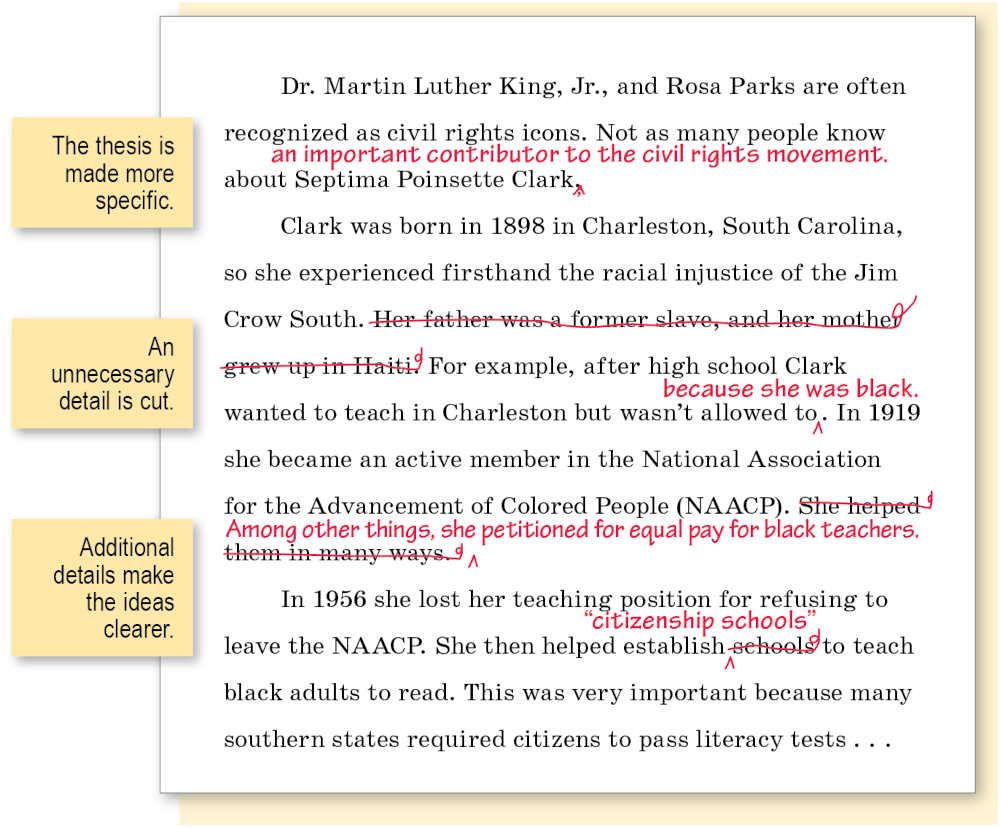
WOC 050
Page 50

Revising for Organization ■
Use these questions as a guide when you check your writing for organization:
- Is my writing a meaningful whole, with an effective beginning, middle, and ending?
- Are details within paragraphs well organized, connected with transition words or phrases?
- Do I need to reorder any information?
Making Changes
This excerpt shows the organization changes a writer made in an article about three generations.
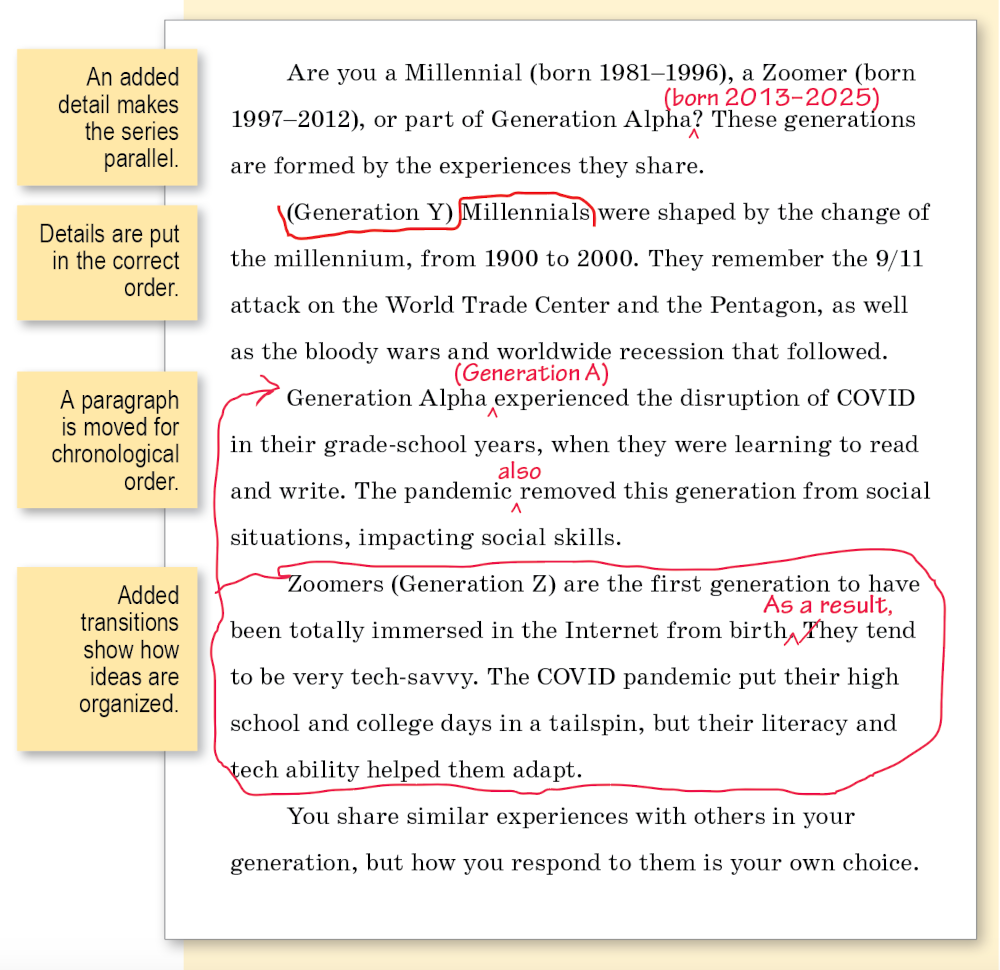
WOC 051
Page 51

Revising for Voice ■
Voice gives writing personality, and it helps attract and hold the reader’s interest. Ask yourself these questions when you check your writing for voice:
- Does my voice achieve my purpose?
- Do I connect to my audience?
- Do I sound confident and interested?
Making Changes
This excerpt shows the changes a writer made in the voice of an essay about lineage in last names.
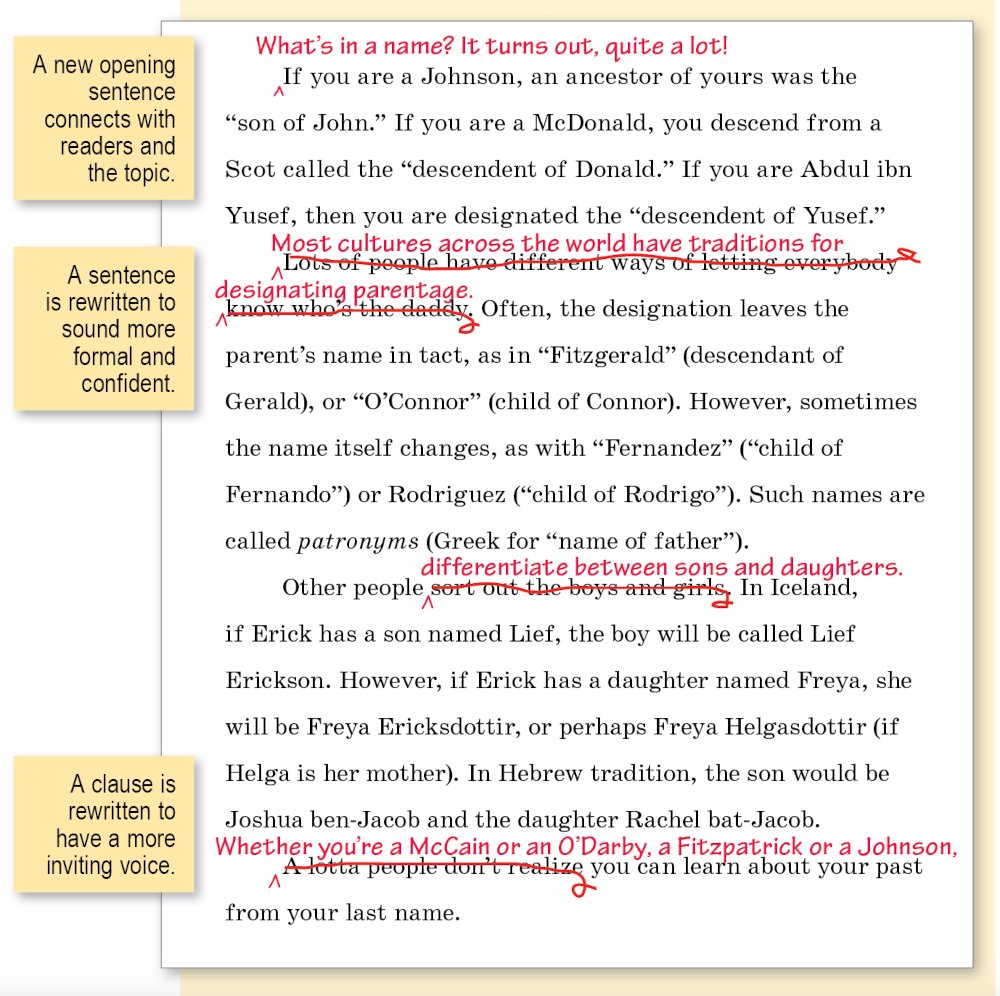
WOC 052
Page 52

Revising for Word Choice ■
Substitute specific words for general ones and improve connotation. Ask these questions to revise for word choice:
- Do I use specific nouns and verbs?
- Do I use colorful modifiers when they are needed?
- Do my words create the right feeling?
Making Changes
This excerpt shows the changes the writer made in word choice for a spooky story.
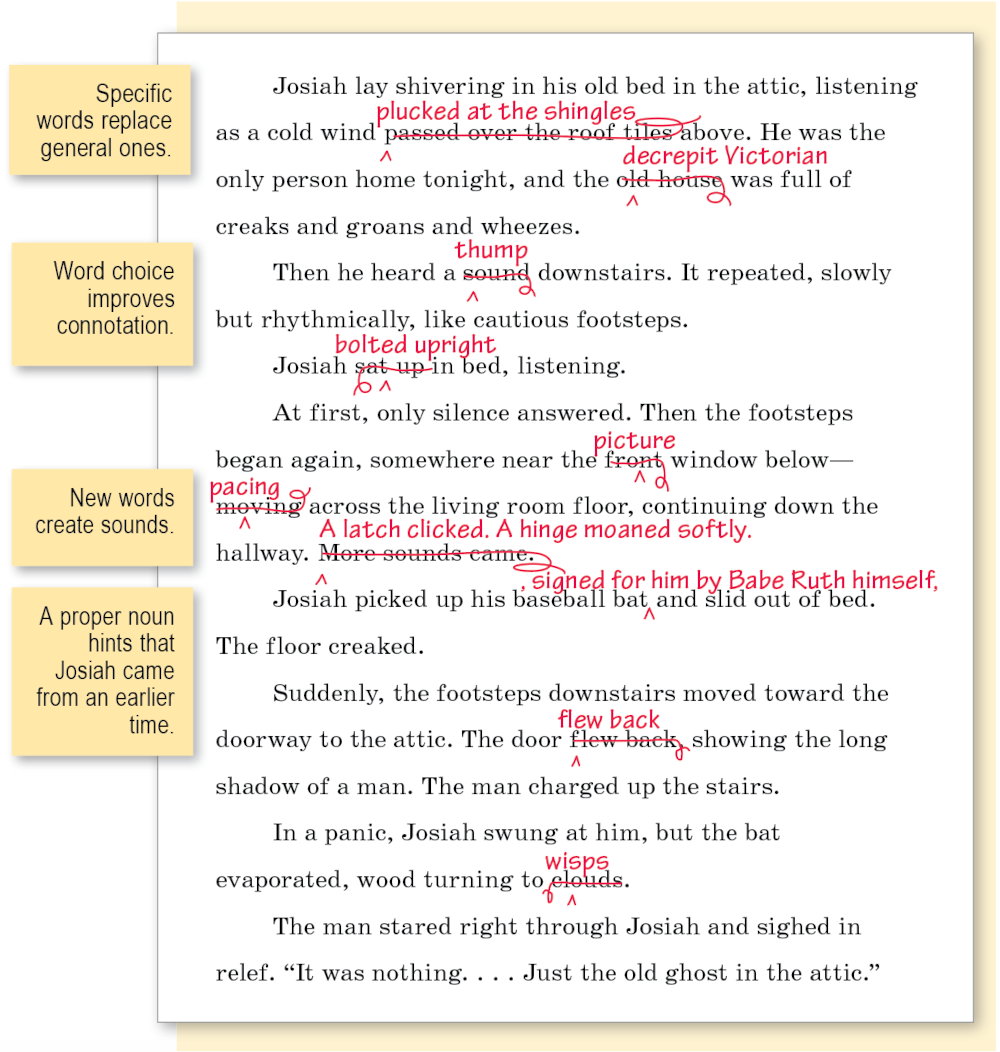
WOC 053
Page 53

Revising for Sentence Fluency ■
When checking your writing for sentence fluency, pay special attention to the sound and the flow of your ideas. Ask yourself these questions when you revise for sentence fluency:
- Are my sentences clear and complete?
- Do I use different types and kinds of sentences?
- Have I varied my sentence beginnings and lengths?
Making Changes
The excerpt shows the changes the writer made to improve the sentence fluency in an article about brain development and diet.
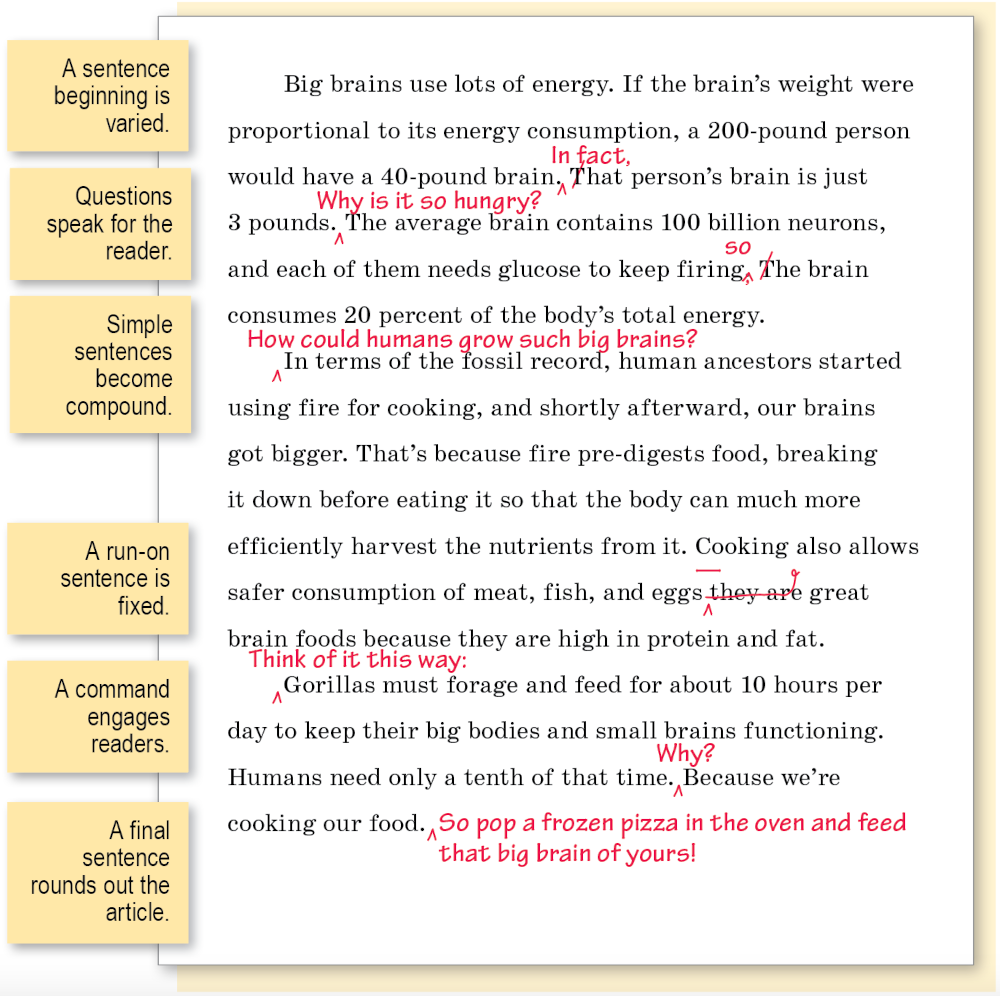
WOC 054
Page 54
Revising
Use this traits checklist as a guide when you revise your draft. Remember the four basic revising moves: add needed details, cut unneeded details, rewrite unclear parts, and reorganize anything that is out of order.
Revising Checklist
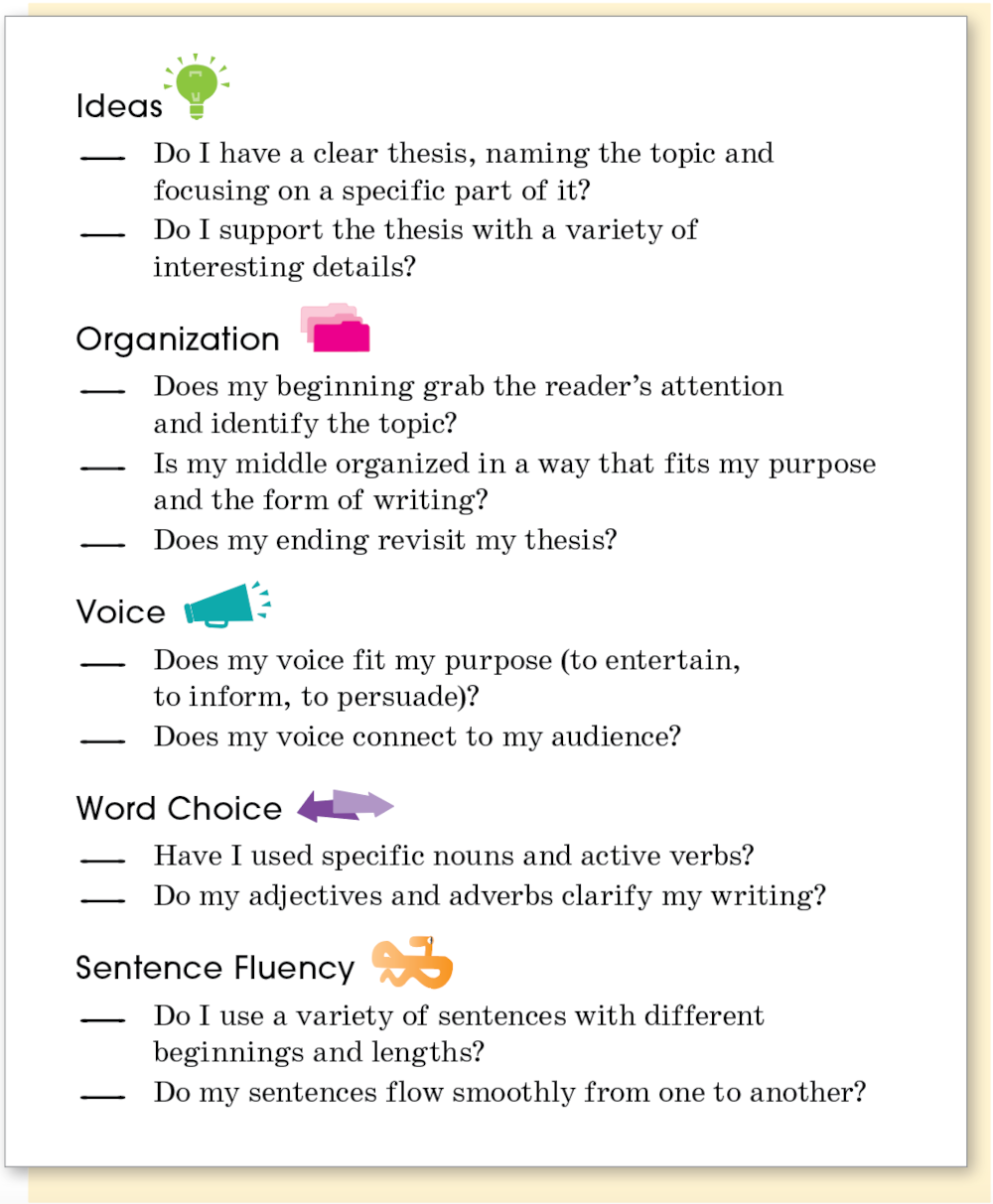
WOC 055
Page 55
Revising with Partners
When you draft, you guess what your audience will think. When you revise, you can find out for sure—by getting a peer response. The writer and responder have different roles.
Role of the Writer
- Bring a complete first draft or revised draft, with a copy for each responder if possible.
- Briefly introduce your writing, and indicate the type of feedback you want: “I need help with voice,” or “I want to hear anything you have to say.”
- Read your copy out loud straight through.
- As the group responds to your writing, listen and take notes.
- Discuss any special concerns. You may want to pump up your beginning, or someone might ask for better support.
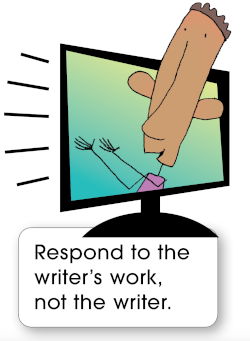
Role of the Responder
- Listen as the writer reads, and follow along. Take notes.
- Think of the purpose and audience. If the writing is a story to entertain young children, react accordingly.
- Afterward, provide comments orally, through freewriting, or by completing a response sheet. (See pages 57–58.)
- Give constructive criticism. Focus on improvements, not faults. (See page 56.)
- Ask questions of the writer: How might you restate your thesis? What argument most needs strengthening?
- Listen to others’ comments and add to them.
Good Thinking
Everyone should have the same goal—to make the writing better. Responders should target that goal, and writers should receive critiques with that goal in mind. (See page 56.)
WOC 056
Page 56
"We all need people who will give us feedback. That's how we improve.”
—Bill Gates

Responding with Comments
The most useful responses are focused and specific. They tell what is working in a piece of writing and what could work better. They offer suggestions. Here are some examples:
What Is Working
- Your opening questions really got my attention.
- I liked the simile “like a bed of embers” for your story ideas.
- You create suspense from the start. It keeps us reading.
What Could Work Better
- The setting needs more description. Day or night?
- I think the last argument needs an example.
Suggestions
- If you included statistics about the mortality rate, you would really drive home the importance of treatment.
- Some sentence variety would make this more interesting.
- I kind of lose your voice near the end.
Using Tact: Be Honest but Kind
- Focus on fixes instead of problems. For example, “A quote from a scientist would strengthen your point” is more constructive than “You’re not a scientist, so why should we believe you?”
- Use “you” to praise, and use “we” to criticize. For example, “You have such a strong beginning. I think we can make the middle just as strong with a personal anecdote.”
- Let the writer decide. Offer your feedback and then step back so the writer can make revisions.
WOC 057
Page 57
Responding in Writing
Use a response sheet like the one below or the one on the next page to respond to another person’s writing.
Specific Response Sheet
This specific response sheet provides questions that you answer in response to a paper. It may work best when you are just starting out.
Response Sheet I
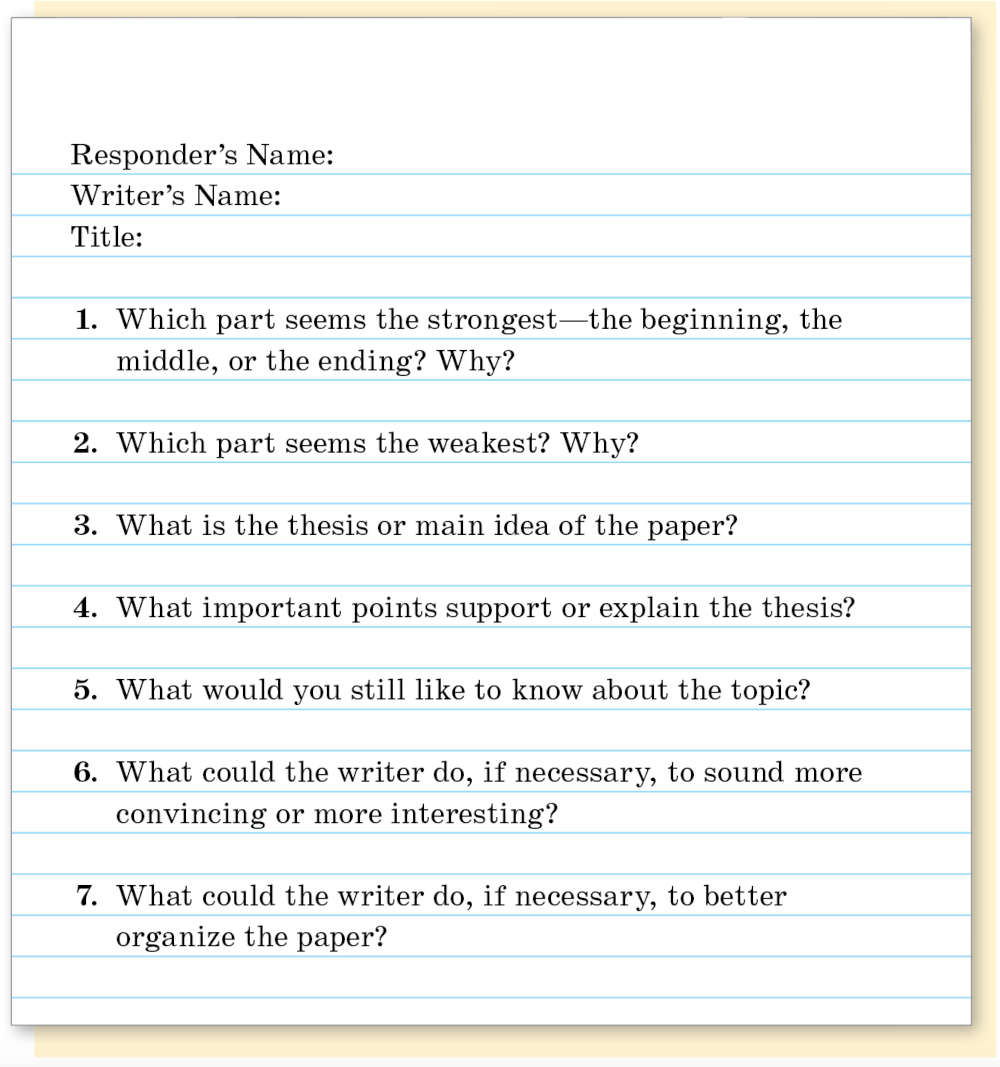
WOC 058
Page 58
General Response Sheet
This general response sheet is open ended and allows you to decide what to comment on in a piece of writing. It may work best after you have gained some peer-responding experience.
Response Sheet II
